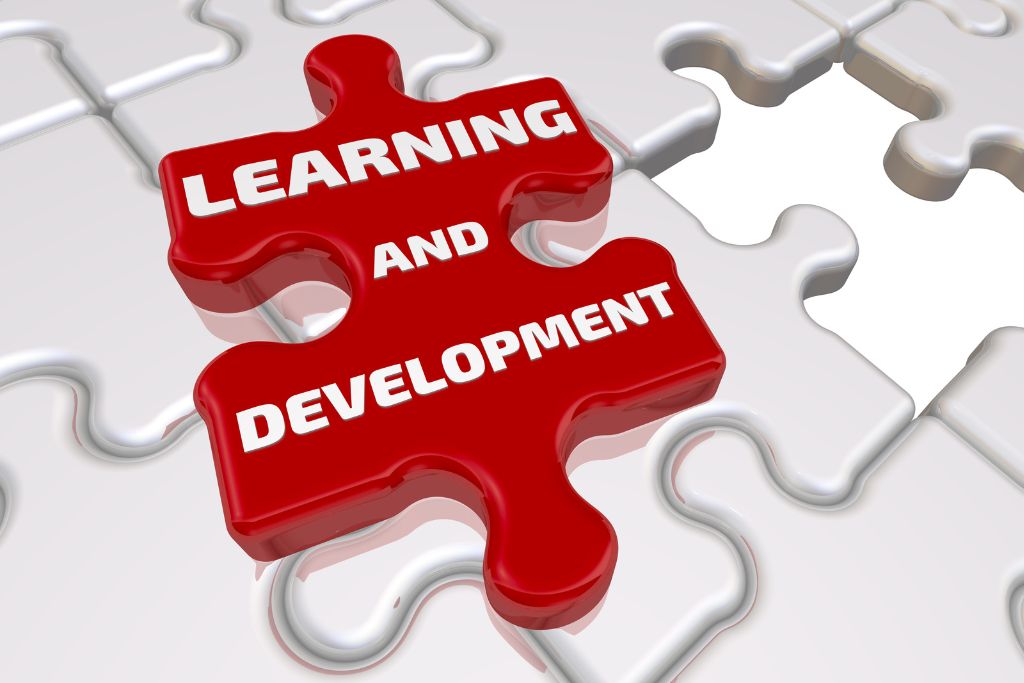
Learning and Development – What is it?
If you want to grow a business, you need to grow a team of skilled employees who will stick by your side and contribute to your goal. While the task of looking for a good team might be of secondary importance to you, it is of primary significance to your business goal. This is the case for a simple reason – no matter how skilled, driven, or competent an individual might be, a single individual can’t run a medium or a large business in the modern business environment.
In order to get and keep skilled and reliable employees, you need to offer something they will find beneficial in their life and business journeys. It’s always a give-and-take relationship. In order to win their trust and loyalty, you need to know what to give to them so they can take you where you want to be. Most successful company managers study this magic substance with the utmost care, but it is always changing.
A century ago it was enough to offer stable income and most employees would stick with their companies until the day they retire. It was considered common sense and changing companies was a bit of a taboo. Most products had much longer lifecycles which means research and development made a lesser impact on business success. Since designing and developing takes a lot of highly skilled workers, it means the companies of the past didn’t need as many skilled workers as modern companies need to have nowadays. Things have changed!
The companies that operate in the era of a knowledge-based economy rely primarily on highly skilled workers to operate. This necessity brought a number of changes and improvements that enabled companies to continue operating in a new environment. Alongside those changes, the multigenerational workforce had to make a set of adjustments. Millennials constitute the forefront of the current generation of workers and they brought their values, dreams, and goals with them. Now it’s almost recommended to change companies often. Providing stable income on a month-to-month basis is fine, but it takes more to keep workers from leaving. With this generation of workers, you need to make them feel like they are learning and making professional progress if you want to keep them. We will talk about this phenomenon today and how you can benefit from understanding learning and development!

What is Learning and Development?
Learning and Development (L&D) is an umbrella term describing everything an organization does to encourage employees’ growth and develop their knowledge, skills, and capabilities to drive better business performance! The word learning refers to the process of acquiring knowledge, skills, and attitudes. Development is the broadening and deepening of knowledge in accordance with one’s development goals. The purpose of Learning and Development is to develop or change the behavior of groups and individuals. The goal is to both improve their technical skills as well as attitude and teamworking capabilities. It’s one of the core areas of Human Resources management. In other words, Learning and Development is the means of developing your business by empowering your employees.
With increased employee skill requirements and the need to operate on a short schedule with high levels of synchronicity, businesses are forced to invest in their employees’ development if they want to be competitive and remain relevant in the market. The model companies use to meet this demand is the aforementioned Learning and Development (L&D) and it can be done in different ways depending on a multitude of factors including business size, field, budget, and skill requirements.
How is Learning and Development done?
Learning and Development is done using different models and concepts, the number of which is growing with new trends and demands. All of them share unique features and this part of the article will provide you with key facts necessary for understanding the driving force behind all of them.
In order to understand the most common models of Learning and Development, one must first take into consideration the fact that businesses are the ones financially supporting this activity. That means business goals are the driving factor behind all the activities that constitute Learning and Development. That is the strategic role of L&D. It spans throughout five areas:
1. Attract and retain talent. Learning opportunities affect employability. Since workers value their personal and professional growth options with a company, learning and development opportunities attract and retain skilled workers.
2. Motivate and engage employees. Highly motivated and engaged employees are productive and not only that. They are also capable of coming up with new and better ideas. L&D done properly will allow for this to happen.
3. Develop people capabilities. We live in a knowledge-based economy which means that most professionals are and should be seeking professional improvement. As a result of that trend, knowledge has a shorter lifecycle as well. In order to cope with that, companies need to constantly invest in their employees to stay competitive.
4. Create a values-based culture. In a work environment that is increasingly more virtual and scattered, building a community is of key importance for the employer. It helps keep the team together and increases the likelihood of getting the work done faster and more reliably.
5. Build an employer brand. You probably know that most of the people in tech want to work for Google. Well, that’s it. Google has managed to create a strong employer brand that attracts because they provide opportunities workers are seeking. At the same time, this investment in L&D allows them to get the best possible workforce. Having a strong employer brand is a win-win solution.

The mode in which L&D is done depends on the company size, budget, and needs. Larger organizations often allow for more formal, structured, and focused learning opportunities done within the company or outside by specialized educational and training institutions. It’s also worth noting that employees within larger organizations often have more specialized and often repetitive task lists which require specific programs generally outsourced to different institutions. Larger companies are generally capable of providing employees with access to a wide range of tools, courses, certifications, and programs. This is the perk of a larger budget and it’s designed to deepen one’s professional skills in one particular job. As a result, the worker’s employability increases within that specific field and it reduces the number of companies the employee might find satisfactory thus keeping the employee within the company longer.
Smaller companies usually have smaller budgets for L&D. That means most of L&D is done within the company in a less formal and structured environment where employees can learn faster and acquire various skills from different business fields, but the rate at which skills are acquired is often significantly higher and more stressful. Small companies are forced to operate in a high-risk mode most of the time. With more risk, there are greater rewards for everyone.
As a result of different factors surrounding different sizes and scopes of business, L&D opportunities are different in many ways. Regardless of that, they need to span all five areas of L&D for maximum impact and business longevity. Some of the most popular models include the 70:20:10 learning model which represents an attitude professionals should have towards extending learning beyond classrooms. The number 70 represents 70% of lessons learned from tough jobs. 20 represents 20% learned from other people and 10% is the amount one should learn from courses and reading. The 70:20:10 learning model is one of the most well-known and fundamental L&D models, but the least specific and practical for specific jobs. Other popular models include the Four Stages of Competence Model, the Johari Window, SMART Goal-Setting Model, GROW Coaching Model, and hundreds of models have been developed to cater to specific needs different organizations have.
The benefits of Learning and Development
Forming and implementing an effective L&D strategy has benefits for any business. Providing employees with access to acquiring new skills will allow them to bring those skills to work. Having skilled workers was never a bad idea, but it is a must nowadays. L&D will also help to increase employee satisfaction which will help you keep employees longer and avoid the trouble of constantly training and introducing new employees.
L&D strategies are widely available and there definitely is one that will fit your particular goals. We offer some of the most innovative and practical solutions for your Learning and Development needs which you can find here and reap the benefits of professional cooperation in your business endeavor!




